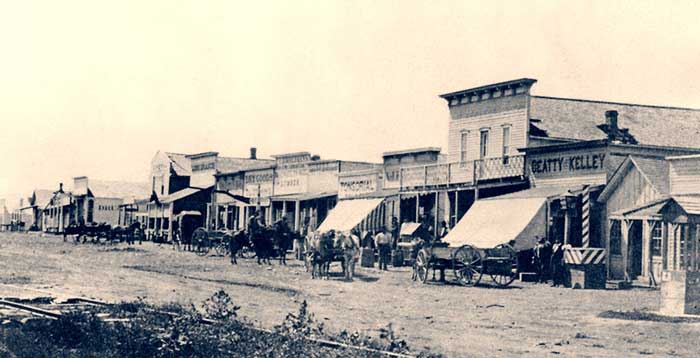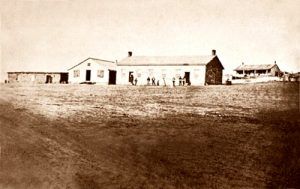
The Enduring Echoes of the Untamed West: Dodge City and the Forge of American Legends
America, a nation forged in the crucible of ambition, innovation, and expansion, boasts a rich tapestry of legends that define its character and illuminate its past. These are not merely fanciful tales but often dramatic distillations of real events, larger-than-life figures, and the raw, unvarnished spirit of a people building a nation. From the stoic wisdom of Native American lore to the audacious exploits of pioneers, revolutionaries, and industrialists, American legends offer a compelling window into the national psyche. Yet, among the pantheon of these tales, none burn brighter or resonate more deeply than those born from the crucible of the American West, and few places embody the essence of that era more vividly than Dodge City, Kansas – a name synonymous with frontier justice, lawlessness, and the very birth of the cowboy legend.
The legends of the American West are not static historical records; they are dynamic narratives that reflect a period of immense transformation. They speak of a vast, untamed wilderness stretching towards the Pacific, beckoning with promises of land, gold, and freedom. This westward expansion, fueled by the concept of Manifest Destiny, brought with it an exhilarating mix of opportunity and danger, innovation and brutality. It was an epoch where individuals, often far from the established norms of eastern society, were forced to define their own codes of conduct, where courage was a daily necessity, and where the line between hero and villain was often blurred by the dust of the trail and the smoke of a six-shooter.
At the very heart of this legendary landscape, positioned strategically along the Santa Fe Trail and later bisected by the Atchison, Topeka and Santa Fe Railroad, lay Dodge City. Its genesis in the early 1870s was less a deliberate urban plan and more an organic explosion born from the confluence of three powerful forces: the railroad, the buffalo, and later, the cattle industry. It was a town that sprang up with the speed of a prairie fire, a raw, boisterous settlement that would quickly earn the moniker "Queen of the Cowtowns" and become an enduring symbol of the Wild West.

Initially, Dodge City’s economy was fueled by the devastatingly efficient slaughter of the American bison. The railroad, pushing westward, provided the means to transport buffalo hides and meat to eastern markets, turning the region into a vast killing field. Hunters, traders, and adventurers flocked to the nascent settlement, creating a rough-and-tumble atmosphere where fortunes were made and lost, and where law was often a distant whisper. The sheer scale of the buffalo hunt is itself a stark legend of human impact on nature, with millions of animals decimated in a matter of years, forever altering the ecosystem and the way of life for Native American tribes.
As the buffalo herds dwindled to near extinction, Dodge City seamlessly transitioned to its next, even more iconic role: the premier destination for Texas cattle drives. The vast herds, driven northward from the ranches of Texas along the Western Trail, found their railhead in Dodge City. Here, exhausted cowboys, after months on the dusty trail, converged with cattle buyers, gamblers, saloon keepers, and prostitutes. The town became a melting pot of cultures and ambitions, a place where money flowed freely and inhibitions were shed. It was, in essence, the ultimate frontier boomtown.
Contemporary accounts paint a vivid picture of Dodge City during its cattle-era heyday. It was a place of stark contrasts: a few respectable businesses alongside dozens of saloons, gambling halls, and dance houses. The famed "Front Street" was a constant carnival of activity, its boardwalks teeming with cowboys, merchants, soldiers from nearby Fort Dodge, and a constant stream of travelers. Violence was endemic, fueled by alcohol, long-simmering grudges, and the sheer desperation that often accompanied life on the edge. Yet, amidst the chaos, a nascent form of community began to take shape, demanding a measure of order.
This demand for order birthed another crucial element of the Dodge City legend: its legendary lawmen. Figures like Wyatt Earp, Bat Masterson, Luke Short, and Charlie Bassett, among others, became synonymous with frontier justice. These were not always men of pristine character; many had pasts as colorful as the outlaws they pursued, often blurring the lines between enforcer and participant in the town’s darker amusements. However, they were pragmatists, employing a brand of law enforcement that was swift, often brutal, and singularly focused on maintaining a fragile peace.
Wyatt Earp, perhaps the most famous of Dodge City’s lawmen, served as assistant marshal and gained a reputation for his unflinching courage and his ability to stare down armed men. Bat Masterson, another celebrated figure, served as sheriff of Ford County and later as city marshal, known for his keen intelligence and his willingness to use force when necessary. Their methods were often unconventional, relying on a fearsome reputation and the threat of immediate violence rather than lengthy legal proceedings. The infamous "dead line," beyond which cowboys were forbidden to carry firearms, was one such pragmatic approach to reducing bloodshed within the town limits.
The stories of these lawmen, their shootouts, their strategic maneuvering against notorious desperadoes, and their efforts to impose a semblance of order on a chaotic frontier, became the bedrock of countless dime novels, pulp fiction, and eventually, Hollywood westerns. The legend of Dodge City’s "peace commission" – the informal assembly of these lawmen who, for a brief period, brought an unprecedented calm to the town – cemented their place in American folklore. They personified the struggle between civilization and savagery, the yearning for justice in a lawless land.
Yet, it is crucial to distinguish between the legend and the historical reality. The romanticized image of the lone, virtuous lawman battling hordes of villains often overshadows the complex, often morally ambiguous reality. Many of these lawmen were also gamblers, saloon owners, and sometimes, even involved in less-than-legal activities. Their exploits were frequently exaggerated for dramatic effect, and their motives were not always purely altruistic. The enduring power of these legends lies not in their absolute factual accuracy, but in their ability to distill profound human experiences – courage, resilience, the search for justice – into compelling narratives.
The television series Gunsmoke, which ran for two decades and became one of the longest-running dramatic series in television history, further cemented Dodge City’s legendary status. While the show took liberties with historical accuracy, its depiction of Marshal Matt Dillon bringing order to a fictionalized Dodge City ingrained the town and its archetypal figures into the global consciousness. For millions, Dodge City became the quintessential Wild West town, a place where good battled evil under the vast Kansas sky.

As quickly as it rose, Dodge City’s era as the "Queen of the Cowtowns" began to wane. The extension of railroads further south, the enclosure of the open range by barbed wire, and the increasing settlement of farmers brought an end to the great cattle drives. By the late 1880s, the wild, open-ended days were largely over. Dodge City, like many other frontier towns, had to adapt or perish. It did adapt, transforming itself into a more settled agricultural and commercial center, a testament to the resilience of its inhabitants.
Today, Dodge City embraces its legendary past. Tourists visit Boot Hill Cemetery, the final resting place of many who died with their boots on, and walk the reconstructed streets of Old Dodge City, seeking to connect with the echoes of Wyatt Earp and Bat Masterson. The town’s historical markers and museums carefully curate the legacy, acknowledging both the gritty reality and the enduring myth.
The legends of Dodge City, and indeed the broader American West, continue to resonate because they speak to fundamental human desires: the quest for freedom, the struggle for order, the allure of the unknown, and the enduring appeal of individuals who dared to live on their own terms. They are stories of a nation in its raw, formative years, grappling with its identity, its vastness, and its boundless potential. These legends, whether fully factual or embellished by time and retelling, serve as powerful reminders of the adventurous spirit that shaped America, a spirit that continues to inspire and challenge us to this day. They are not merely relics of the past but living narratives, perpetually whispered on the wind, reminding us of a time when the West was truly wild, and the legends were just beginning.


